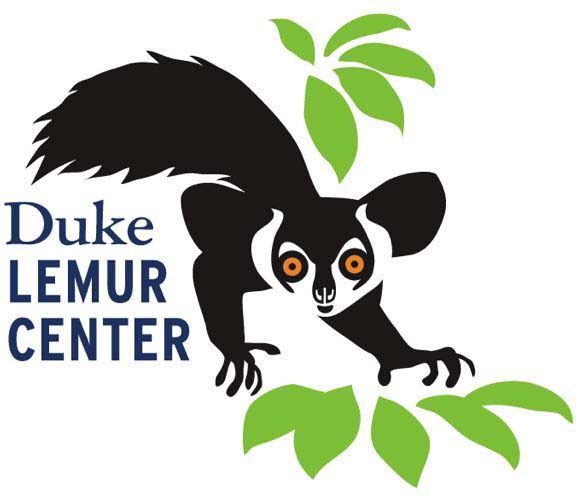This FREE virtual tour takes place over a collection of 14 carefully curated videos. Each video ranges from three to 11 minutes long, highlighting each species along the tour path and discussing all the topics that you would see on a general tour onsite at the DLC. As an added bonus, the videos feature behind-the-scenes footage of the lemurs, giving you an even better close-up look at these amazing animals!
We hope you enjoy your free virtual visit to see the lemurs! If you would like to support our work here in Durham, NC and across the world in Madagascar, there are so many ways you can help!
1: Introduction
Welcome to our virtual tour! Our first video in the series introduces you to the Duke Lemur Center and answers questions like: How did the Center get started? How many lemurs do we have? What is the Duke Lemur Center all about? Learn all about our non-invasive research, positive reinforcement training program, 54-year history, and critical conservation work in Madagascar—all of which makes the Duke Lemur Center one of the most unique and incredible places in the world.
View transcript for Episode 1.
2: What Is a Lemur?
This introduction to all things lemur will answer all of your questions about what lemurs are, where they fit in the family tree, and how they came to live on the island of Madagascar. Dr. Matt Borths takes us on a journey to the Duke Lemur Center’s Museum of Natural History (formerly the Division of Fossil Primates) where we’ll meet a few of the oldest members of the lemur family and learn what makes lemurs so remarkable!
View transcript for Episode 2.
3: Housing at the DLC
The residents of the Duke Lemur Center have a variety of places to call home, whether its out in the multi-acre forested enclosures or in the dark and quiet of the Nocturnal Building. Take a tour of the lemurs’ housing areas in this video to see how we keep all of our many different lemur species safe, socialized, and stimulated!
View transcript for Episode 3.
4: Coquerel’s Sifaka
Time to jump in! Our first featured lemur species is the bouncy, leaf-eating Coquerel’s sifaka of Zoboomafoo fame! In this adventure into the DLC’s Natural Habitat Enclosures, we’ll watch sifaka doing the things they do best—all while learning how we keep lemurs safe and healthy in their forested areas. Take a (bipedal) walk on the wild side with Pompeia, Francesca, and a couple of photobombing friends!
Want to learn more AND support our lemurs’ care at the DLC and their conservation in Madagascar? Become a “lemur parent” by symbolically adopting Pompeia through our Adopt a Lemur program! You can also read our interview with Zoboomafoo co-creator Martin Kratt in the DLC’s 2019 annual magazine.
View transcript for Episode 4.
5: Collared Lemur
Any collared lemur fans out there? By the end of this video, we hope you will be! Meet some of our cute and curious collared lemur residents here at the DLC and learn what a lemur’s social life looks like, whether lemurs play well with others, and how we keep these primates busy and entertained in our care. After watching, you can learn even more about our enrichment program and even send a lemur a present via the DLC’s amazon.com wishlist!
View transcript for Episode 5.
6: Ruffed Lemurs
What’s black and white and red and fluffy all over? You’ll find out in this double-trouble video featuring two of the furriest and noisiest lemurs at the DLC: the red ruffed lemur and the black and white ruffed lemur. Learn how these lemur species adapt to life in the rainforest, what their role is in the ecosystem, how they communicate, and how they handle three very wiggly triplets… !
Ruffed lemurs may be the world’s largest pollinators, but don’t overlook the smaller, less exotic pollinators in your own local ecosystem! Conservation starts literally in our own backyards. Our local ecosystems, habitats, and animals/insects should be protected and supported, in the same way that lemurs and their habitat in Madagascar should be.
The DLC’s summer tour path is a certified Monarch Waystation. To learn more about the importance of Monarch Waystations and how to create your own, please visit MonarchWatch.org. You can also download a list of plants used in the Duke Lemur Center’s summer garden and tour path. On the list, plants are identified as native and/or attractive to butterflies.
View transcript for episode 6.
7: Mongoose Lemur
Curious about lemur care at the DLC? Mongoose lemurs Mico and Bonita help answer all the important questions: What do lemurs eat? When do lemurs sleep? How long do lemurs live? They are especially happy to demonstrate the eating part. Feel free to snack along during this video!
View transcript for Episode 7.
8: Crowned Lemur
Presenting their majesties, the crowned lemurs! Join the royal family to learn about the Duke Lemur Center’s conservation breeding program, meet baby Nedjem, and discover why baby lemurs are so important for species survival in Madagascar.
View transcript for Episode 8.
9: Blue-eyed Black Lemur
These blue-eyed black lemurs are certainly deserving of their celebrity-inspired names—not only are they extremely rare, they have the best fashion sense around! Find out why these beautiful lemurs are so special and unique, and how the Duke Lemur Center is working hard to make sure their population stays healthy for many years to come. This includes bringing Mangamaso and Velona, a breeding pair of blue-eyed black lemurs, to the Lemur Center in 2017—the first time lemurs had been imported to the US in 24 years!
Both Mangamaso and Velona were relocated from Parc Ivoloina, a nonprofit nature center in eastern Madagascar where they and their parents were born into a conservation breeding program. They have since had an extraordinary baby of their own, christened Ranomasina (“across the sea”) in recognition of her parents’ extraordinary journey.
View transcript for episode 9.
10: Ring-tailed Lemur
We’re pretty sure you’ll recognize these guys—Madagascar’s iconic ring-tailed lemurs are among the most well-known lemurs of all! With their stripy tails, stinky habits, and girl-power attitude, these primates are sure to inspire some lemur love. In this video, we talk about why the best way to love lemurs is to respect them as wild animals—one of many reasons lemurs should never be kept as pets.
View transcript for episode 10.
11: Mouse Lemur
Don’t be fooled by the size: These two fun-sized primates are some of the coolest, smartest, and fastest animals living at the Duke Lemur Center, and they’re helping with some really awesome non-invasive research projects, too—including shedding light on Alzheimer’s disease. Using positive reinforcement training with pineapple juice rewards, they can even use tiny touchscreens!
While these small fries are sometimes too tiny and too fast to see clearly on a live tour, we take you behind-the-scenes to get a good look at the gray mouse lemur in all its (miniature) glory.
View transcript for episode 11.
12: Bush Baby
One of these things is not like the other! The Duke Lemur Center is not only home to 12 different species of lemur, but also one species of bush baby! While this species is from mainland Africa and would never share space with a lemur in the wild, they make great neighbors to our other nocturnal species here at the DLC. See if you can keep up with these big-eared, bug-eating jumping beans!
13: Aye-ayes
There’s something strange about this lemur but we can’t quite put our finger on it… ! Find out what makes the aye-aye so unique, and how our animal caretakers work hard to make sure our aye-ayes can use their talents every day. An extremely rare and endlessly fascinating lemur, the aye-aye continues to teach us about the natural history of the lemur family, and their somewhat spooky appearance makes us love them even more!
Unfortunately, not everyone feels the same way about aye-ayes, and in this video we learn how cultural perspectives or even first impressions of an animal may affect their survival in the wild.
View transcript for episode 13.
14: Fat-tailed Dwarf Lemurs
Sometimes really amazing discoveries come in small packages! Learn how the fat-tailed dwarf lemur earns its funny name, how its body responds to hibernation and topor, and why studying its remarkable habits could have a huge impact in the human world.
Intrigued? If you’d like to learn more about these amazing hibernating primates, check out this informative and adorably illustrated video by Sheena Faherty, one of DLC Director Anne Yoder’s former graduate students. While pursuing her Ph.D. here at Duke, Sheena studied the only primates capable of hibernation behavior: the fat-tailed dwarf lemurs of Madagascar!
You can also watch the talk Sheena gave at the DLC’s 50th-anniversary scientific symposium: “Gene expression and physiological extremes in primate hibernation” and explore the article “Could People Hibernate? Lemurs Give Clues” published in National Geographic, which discusses how studying hibernation in fat-tailed dwarf lemurs can help people, too – from terminally ill patients to soldiers and astronauts.
View transcript for episode 14.
Questions or comments?
To contact the Education Department, please call (919) 401-7240 or email primate@duke.edu. We look forward to hearing from you!

